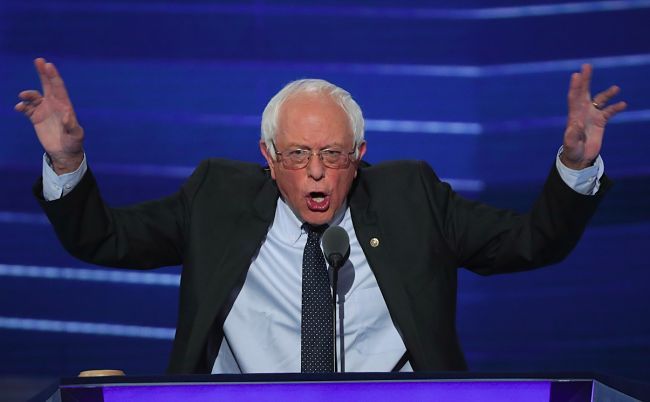In recent years, the rise of the student debt crisis has intensified at an alarming rate. As people are sold on the idea of an American Dream that requires an expensive education, many find themselves crushed under the weight of thousands of dollars of debt following their graduation as they face an uncertain job market. And the problem can persist through their lives to when they should be thinking about retirement, as well.
According to reports by both the New York and Cleveland Federal Reserve Banks (as reported by Student Loan Hero), 2016 college graduates take an average of $37,000 in student loan debt with them when they leave school and Americans, in total, owe $1.3 trillion dollars to lenders for the cost of the college experience. After leaving the college campus behind, the nagging debt is taking its toll on borrowers’ places in the greater economy. Due to the cost of education, many millennials are putting off buying homes, having children, and starting new businesses. Not only does this lead to a depressed economy, but it also widens the wealth gap and causes many people to be left behind financially just as their adult lives are beginning.
With this existing as such an ever-present problem that touches the lives of approximately 44 million Americans and counting, let’s examine the cost of college and what the Trump administration plans to do about all of this.
Why The Hell Does College Cost So Much?
There are a lot of factors that have contributed to the staggering cost of education and the accompanying size of our collective student debt. The cost of tenured and publishing professors and a higher standard for amenities to attract potential students are factors, but the fact that students are shouldering a majority of the cost instead of the state is hugely responsible. According to the Washington Post, the amount of funding going towards education is not equivalent to the rising numbers of students. When looked at by a student-by-student percentage, the amount of money going towards public higher education is its lowest since 1980. This is becoming a uniquely American problem, as well. Germany, Finland, France, Sweden, Norway, Slovenia, Brazil, Luxembourg, and Iceland are offering higher education for free. However, while these countries are working to make education accessible, the United States is not even keeping pace with inflation.
“Sure, in actual dollars, spending on higher education by the states is up, but it hasn’t kept pace with the rise in enrollment during the last decade, especially as more students go to public colleges. If the current trends continue, beginning in 2022 spending on higher education will reach zero in states such as Colorado and Alaska, and by the 2030s in South Carolina and Massachusetts.”(via)
On top of faculty, expensive sports programs, and other high-tech facilities also add to the high price tag of tuition. But there’s another growth area that is responsible for winning students and rising costs.
“Schools are all going after a fairly small pool of students who are high achieving and high income and able to pay much of their own way to college. They’re trying to build more amenities — so you hear about the rock climbing walls and the lazy rivers,” Robert Kelchen, a professor at Seton Hall University’s Department of Education, told CNBC.
And with the addition of these new programs and student services, that also creates a whole host of new positions that need to be filled and salaried, which also adds to the price of tuition.
The wealth gap also pertains to educational institutions, with the top 40 richest schools receiving over 60% of gift endowments. According to analyst Pranav Sharma‘s remarks to CNBC, “This growing gap will pose increasing competitive challenges for institutions that do not have the resources to invest in facilities, financial aid and other strategic initiatives at the same level as their wealthier counterparts.” So, with a smaller percentage of schools receiving this increase in revenue (the top 50 richest schools had a median endowment of $3.5 billion, while the rest of the list had a median was just $113 million), students are left to take on more debt to make up the difference.
Bernie And Hillary’s Plan

Getty Image
During the 2016 Presidential Election, the rising rate of student debt was a hotly contested topic. Far left on the spectrum was Bernie Sanders, who promoted free tuition at public universities and colleges, ending the policy that allowed the federal government to profit from student loans, and enriching needs-based financial and work-study programs to make overcoming debt more of a possibility.
In terms of loan repayment, Sanders advocated cutting student loan interest rates nearly in half as well as making refinancing a loan a possibility. These changes — costing $78 million — would have been paid for by instituting a tax on Wall Street speculators. Many argued that Sanders’ plan simply wasn’t doable, but was championed by a large percentage of millennials.
When Hillary Clinton won the Democratic nomination, she worked with Sanders on formulating a plan that focused on making education more affordable and increasing access to debt forgiveness. Clinton’s focus was on creating repayment plans based on projected income, assuring borrowers that they wouldn’t have to pay more than 10% of their paycheck in student loans, while also adopting Sanders’ policy of cutting interest rates for refinancing in half. Clinton also promoted free college at public universities for families with incomes below $85,000 and making community college, a jumping off point for many before they head to a larger institution, free for all students.
Sound good? Okay, then.
What We Got
You heard about the election outcome, right? Clinton and Sanders don’t really have a seat at the table on this issue. Instead, the controversial Betsy DeVos (whose qualifications regarding the student debt crisis were directly called into question during her confirmation hearing) and President Donald Trump are in charge. And the President’s plan has not been at the forefront of the conversation due to his many other executive orders. Though he did speak about these issues during his campaign.
From remarks made at a Ohio rally in October:
“We would cap repayment for an affordable portion of the borrower’s income, 12.5 percent, we’d cap it. That gives you a lot to play with and a lot to do. And if borrowers work hard and make their full payments for 15 years, we’ll let them get on with their lives. They just go ahead and they get on with their lives. Students should not be asked to pay more on the debt than they can afford. And the debt should not be an albatross around their necks for the rest of their lives.”
To clarify: Trump put forth a plan that would cap repayment at 12.5% of the student’s income over 15 years, with the rest of the loan being forgiven. Trump also went after richer universities for not spending more on lower income students.
“Some schools are paying more to hedge funds and private-equity managers than they are spending on tuition, while taxpayers are guaranteeing hundreds of billions of dollars of student loans to pay for rising tuition. We want universities to spend their endowments on their students, not themselves.”
Now granted, Trump’s plan cuts out the free education options that Clinton and Sanders promoted, but the caps on repayment and rejection of the government making money on student loans are common ground between these very different politicians. These things could make a difference for many. You might even get to plan for your retirement at some point and not feel like your long ago decision to pursue a philosophy degree has damned you and robbed you of a chance to retire.
Will It Pass?
Cutting student debt, capping loan repayments and tying them to income certainly qualify as some of Trump’s more liberal policies, so there exists the potential for pushback from an increasingly conservative congress. But at the same time, progressives in the senate don’t think that these plans go far enough to assist lower income families. Which means… we don’t know. This is a President who likes to change his mind and in the name of picking his battles, it’s entirely possible that all of these proposals could get tweaked beyond recognition or simply abandoned.
On this topic, one thing is clear, though: while it may seem nearly impossible for Democrats and Republicans to face any issue in a nonpartisan way, it is becoming increasingly urgent for them to reach across the aisle and find a compromise.
Securing a college education isn’t the only way to make it in America — which is something we may want to signal boost a little bit more — but in the name of staying competitive in a global economy and in the race to innovate across biotech, engineering, and the tech sector (among others), we need to make college less of a gamble and a burden. And we need to make it a more viable option for those who choose that path.
Source: UProxx
